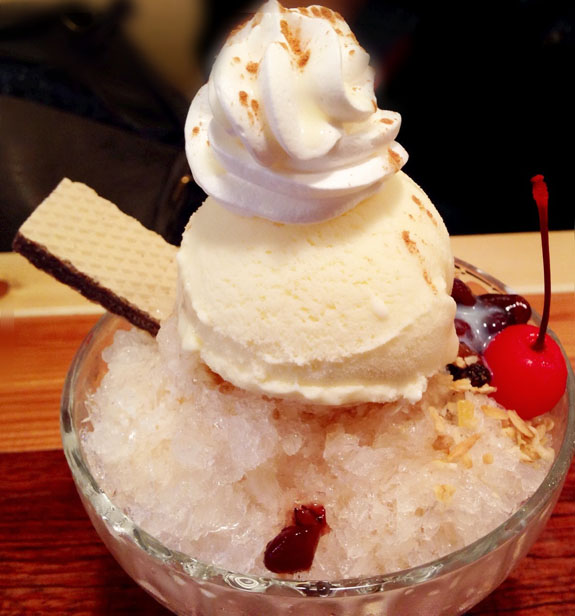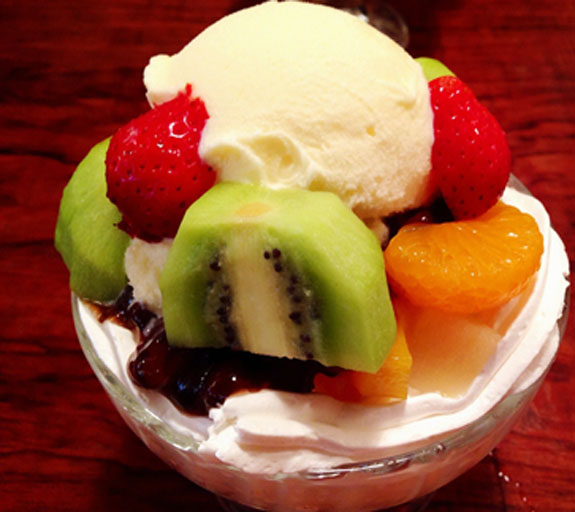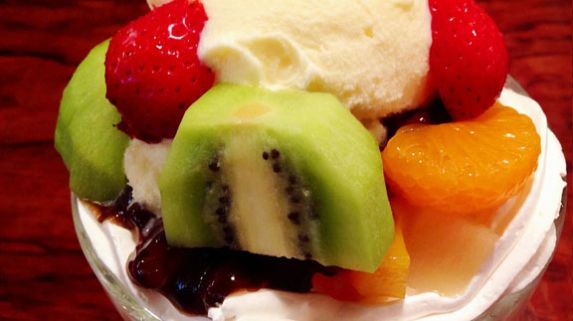Patbingsu: The Taste of Korean Summer
How to tell when summer is drawing close? Of the five senses, the most obvious might be touch: go outside, feel the heat. Next might be sight – abundant greenery replacing the blossoms of spring. But in Korea the sense that proves summer's imminent approach is taste, as restaurants and cafés throughout the country unite in offering the classic Korean dessert “patbingsu” - literally “red bean ice flakes.”
For the uninitiated, patbingsu is a summer staple throughout Korea and in its simplest form consists of shaved or flaked ice, condensed milk, and sweetened red bean paste, usually topped with tteok (Korean rice cake). The forefather of this refreshing snack was first enjoyed during the Joseon Dynasty (1392-1897), when government officials charged with care of the “royal ice box” would take turns to shave ice, before adding fruit to serve. Though shaved ice desserts have been available in various forms across the world for centuries, the addition of sweetened red bean paste in the early 20th century is what made patbingsu a uniquely Korean treat. This combination of shaved ice and red beans is Korean in origin, and one that Koreans are still, rightly, proud to call their own.
The long history of this dessert has carved a special place for it in the hearts of the Korean people. Some prefer patbingsu in its simplest form, as served up before the additions which were a twin product of internationalism and mass production – before even refrigeration had become widely available, and street vendors relied on salted water and fast sales to keep stock from melting. Many remember patbingsu as served in the time of the Korean War (1950-53), vibrantly coloured with dyes and topped for the first time with Western ingredients such as ice cream and fruit cocktail. Two decades later the most fashionable patbingsu came adorned with whipped cream and maraschino cherries, also a product of increased contact with the Western world and the sharing of culinary fashions.
Patbingsu purists can still get their fix at eateries such as Seoul's Mealtop, located on the fifth floor of the Hyundai Department store (Apgujeong-ro, Gagnam-gu). There patrons are offered an authentic, homemade version of the dish. But now, patbingsu can be found to cater to all tastes, even those who don't like red beans. Patbingsu is served with flavors ranging from green tea or coffee, to wine and cheese, with and without the traditional beans, and with toppings including every imaginable variety of fruit, yoghurt, cereal and ice cream. The snack can be as decadent or as inexpensive as budgets allow, with both five star hotels and fast-food chains serving up signature versions.
Patbingsu is more than a dessert: it is a constantly changing (and delicious) piece of Korean history; a reminder of how far and quickly the country has created industrial and commercial success. We often see the future as a realm inhabited by the jetpacks and robots of sci-fi novels. If this is indeed what the year 3000 has in store, then in Korea, the robots will be making patbingsu. for workers to enjoy on their jetpack commute.












